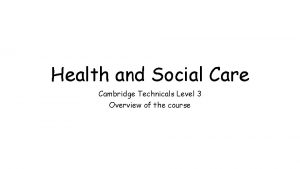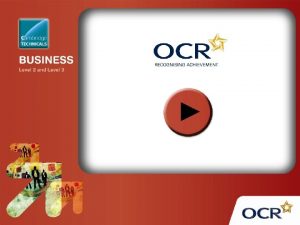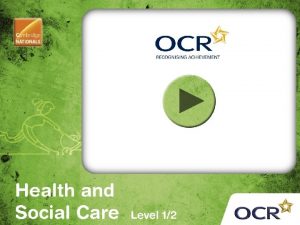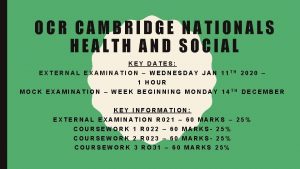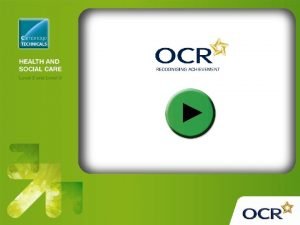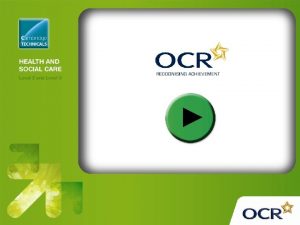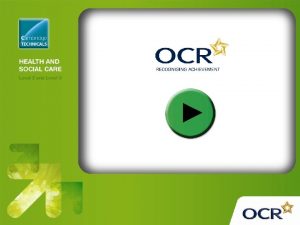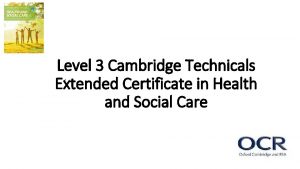Health and Social Care Cambridge Technicals Level 3

Health and Social Care Cambridge Technicals Level 3 Overview of the course

Cambridge Technicals Health and Social Care Level 3 course overview. Year 12 – 2 exam units and 1 portfolio (all mandatory units) Year 13 – 1 exam unit and 2 portfolios (exam is mandatory, other two units are optional choices) There will be a chance to visit Plymouth University for their Healthcare Showcase, to take part in some community volunteering and plenty of practical tasks. There is also an expectation to complete independent reading and research.

Year 12 overview Start off with the mandatory units 1, 2 and 3 Unit 1 - Building Positive Relationships (internally moderated) Unit 2 – Equality, Diversity and Rights (exam) Unit 3 – Health, Safety and Security (exam) One exam will be taken in January and the other exam will be taken in May (both in year 12) Unit 1 will be completed alongside the two exam units N. B. At the end of the Summer term, Unit 4 (exam) will be started, continuing in September of year 13 to be sat in the January.

Year 13 overview Unit 4 – Anatomy and Physiology (exam – mandatory unit) Unit 13 – Sexual Health, Reproduction and Early Development Stages (internally moderated) Unit 14 – The Impact of Long-Term Physiological Conditions (internally moderated) OR Unit 24 – Public Health (internally moderated) Unit 4 will be continued from the end of year 12 and the exam will be sat in January of year 13 N. B. The two optional coursework units will run alongside the exam unit.

Marking/Grading • Each coursework Unit has a Pass, Merit and Distinction level • There is no level 1 or 2 like in year 10/11 as this course is ONLY level 3 • You MUST pass all the Pass level criteria to continue to be able to achieve a Merit and you MUST pass all the criteria in Merit to be able to achieve a Distinction

• You cannot just copy and paste work from the internet! Or from your friends! • It is someone else's work and you cannot claim it as yours. • You can research in books and on line but you need to References reference where you got information from AND write it in your own words. https: //ww w. nhs. uk/co nditio ns/first-aid • It is good to use pictures in your work, just reference accessed 17/9/18 where they come from too. https: //ww w. youtube. c om/re sults? searc Secondary research: Websites/books/videos h_query=fir st+ai d Primary research: Interview/observation accessed 21 /9/18 OCR text b For example: ook (2008) p 6465 https: //www. scie. org. uk/ accessed 12/12/198 Interview w Or if using a quote: www. scie. org. uk (accessed 28/2/20)care worker atit. The. Crr. Higgins y springs Court 12/12 stated that ‘. . . ’ /18 Plagiarism…WARNING

Part of our first Unit (1) covers Communication factors Your first activity is to sort the attached pictures regarding communication into their correct boxes. Which of the following should they come under … • Verbal communication • Written communication • Non-verbal communication • Specialist communication Be prepared to discuss how these methods might be used in health, social care and early year settings.

We cannot discuss the possibilities of where these communication types might be used, so this year you will have to write down how you think ONE from each section might be used in a health care, social care or early year setting. (i. e. choose one from verbal, one from non-verbal, one from written and one from specialist)

Your second activity is to tell me what you understand by the following key terms: • Positive relationships • Health environment • Social care environment • Child care environment • Working partnership • Advocates
- Slides: 9
